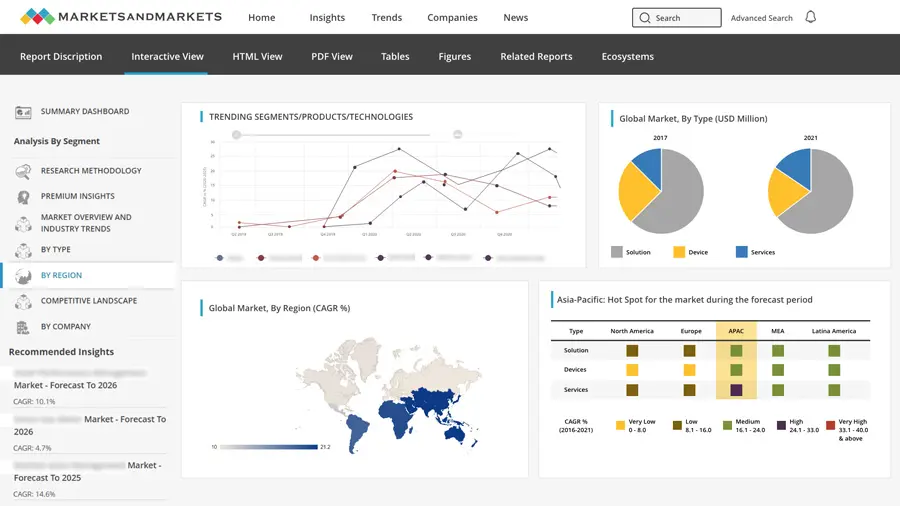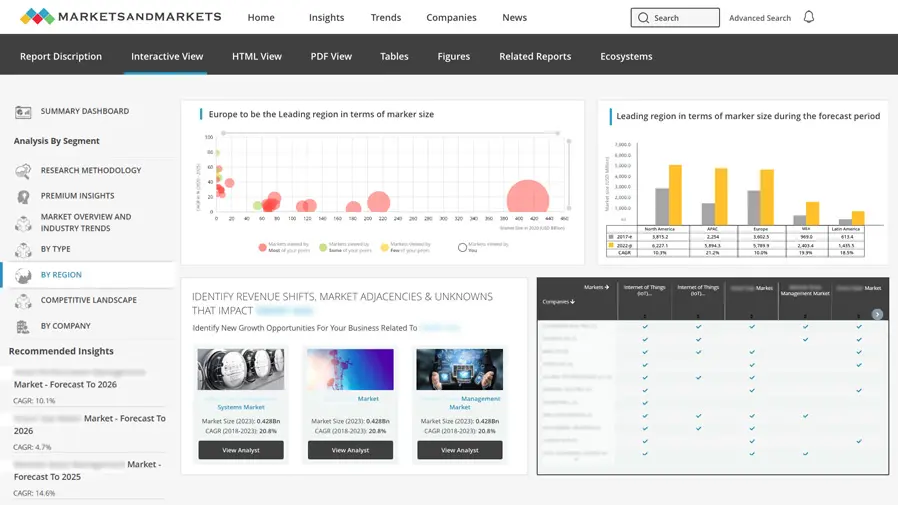MEMS Lidar Market by Technology (2D, 3D), Wavelengths (1550 nm fiber lasers,905 nm laser diodes), Vertical (Automotive, Consumer Electronics, Aerospace & Defense), Region (North America, Europe, Asia Pacific) - GLOBAL FORECAST to 2030
The MEMS LiDAR (Micro-Electro-Mechanical Systems Light Detection and Ranging) market is projected to experience significant growth by 2030, driven by advancements in autonomous vehicles, robotics, and smart infrastructure. This report analyzes the market based on technology, wavelength, verticals, and geographical regions.
Market Segmentation
-
By Technology
- 2D LiDAR – Used for mapping, object detection, and navigation in simpler applications.
- 3D LiDAR – Increasingly adopted in autonomous vehicles and industrial automation due to enhanced spatial accuracy and depth perception.
-
By Wavelength
- 905 nm Laser Diodes – Cost-effective and widely used in automotive applications.
- 1550 nm Fiber Lasers – Higher accuracy and range, but more expensive, making them suitable for high-performance applications like defense and infrastructure.
-
By Vertical
- Automotive – Largest segment due to the rising adoption of autonomous driving and ADAS (Advanced Driver Assistance Systems).
- Consumer Electronics – Growing use in smartphones, AR/VR, and smart home devices.
- Aerospace & Defense – Increasing demand for precise navigation, surveillance, and obstacle detection.
- Industrial – Adoption in logistics, smart manufacturing, and infrastructure monitoring.
-
By Region
- North America – Dominates the market due to strong investment in autonomous vehicles and defense.
- Europe – Significant growth driven by automotive and industrial automation.
- Asia Pacific – Fastest-growing region, led by China, Japan, and South Korea due to increasing adoption of electric and autonomous vehicles.
Market Drivers
- Rising demand for autonomous vehicles and smart infrastructure.
- Increasing adoption of LiDAR in consumer electronics (e.g., AR/VR).
- Technological advancements in MEMS and laser technology.
Challenges
- High manufacturing costs, particularly for 1550 nm LiDAR.
- Technical complexity and integration challenges in small-scale devices.
Key Players
- Innoviz Technologies
- Velodyne Lidar
- Luminar Technologies
- Quanergy Systems
- Ouster Inc.
|
Segment |
Subsegment |
|
By LiDAR Technology: |
|
|
By Wavelengths: |
|
|
By Vertical: |
|
|
By Region: |
|
The MEMS LiDAR market is expected to grow at a CAGR exceeding through 2030, with increasing demand from automotive and consumer electronics sectors driving innovation and market expansion. The shift toward 3D LiDAR and advancements in sensor miniaturization and cost reduction will further accelerate adoption across various industries.
Market Insight on MEMS LiDAR Market – Forecast to 2030
The MEMS LiDAR market is set to experience significant growth through 2030, driven by increasing demand for high-precision 3D mapping and object detection in autonomous vehicles, smart infrastructure, and industrial automation. MEMS LiDAR (Micro-Electro-Mechanical Systems Light Detection and Ranging) systems use micro mirrors to steer laser beams, enabling compact, low-power, and cost-effective solutions compared to traditional mechanical LiDAR systems. The growing adoption of ADAS (Advanced Driver Assistance Systems) and autonomous driving technology in the automotive sector is a major driver of market growth. Additionally, MEMS LiDAR's ability to provide high-resolution 3D imaging with low latency makes it ideal for applications in robotics, environmental monitoring, and aerospace.
Technological advancements in MEMS-based LiDAR are enhancing system performance, with a shift toward 1550 nm fiber laser-based systems due to their longer range and eye safety benefits. While 905 nm laser diodes remain widely used due to their lower cost and established manufacturing processes, 1550 nm systems are gaining traction in high-performance automotive and defense applications. The demand for 3D LiDAR is outpacing 2D LiDAR due to its ability to generate more detailed and accurate environmental models.
The miniaturization of MEMS components and improvements in laser and mirror steering technologies are also contributing to enhanced reliability and reduced production costs.
The automotive sector remains the largest application area for MEMS LiDAR, supported by increasing investments in autonomous vehicle development and smart mobility infrastructure. Consumer electronics is emerging as a high-growth segment, with MEMS LiDAR being integrated into smartphones, AR/VR devices, and home automation systems for enhanced depth sensing and object recognition. In addition, the aerospace and defense industries are adopting MEMS LiDAR for precision navigation, surveillance, and obstacle detection. The rise of smart cities and automated industrial systems is further expanding the market's reach.
Regionally, North America leads the MEMS LiDAR market due to early adoption of autonomous driving technology, strong investment in defense, and the presence of key market players. Asia Pacific is projected to experience the fastest growth, driven by increased production of electric and autonomous vehicles, along with growing investment in smart infrastructure. Europe is also showing strong growth potential, particularly in the automotive and industrial sectors. Leading companies are focusing on technological innovation, strategic partnerships, and production scalability to capitalize on the growing demand for MEMS LiDAR solutions across diverse industries.
















Growth opportunities and latent adjacency in MEMS Lidar Market